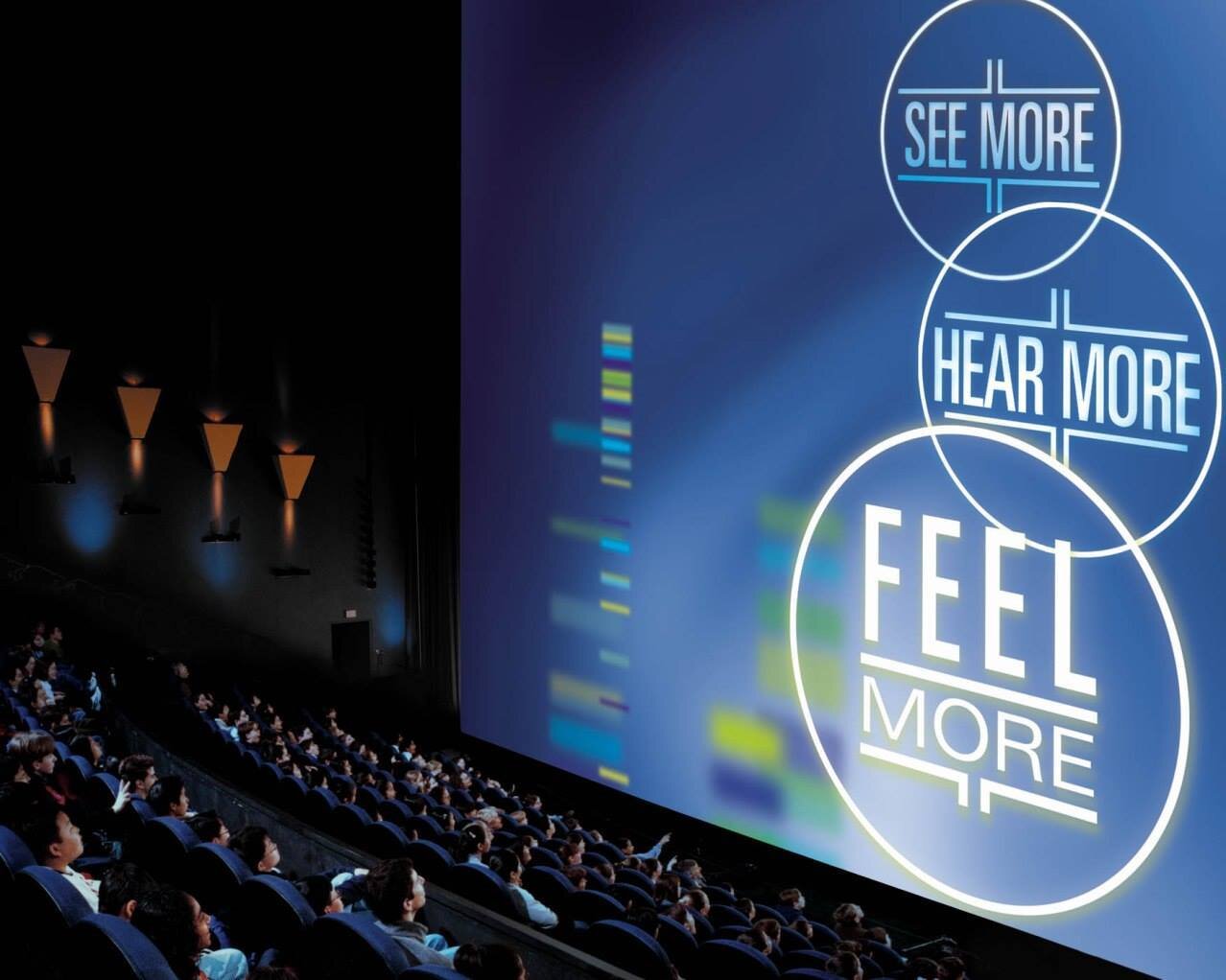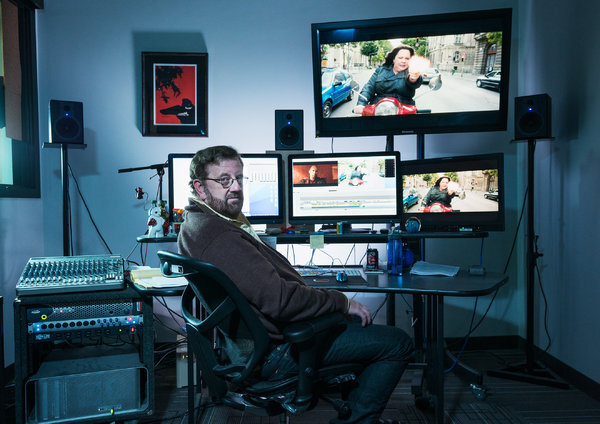Cinematic Attention for a High-Definition Life
by Daron Larson
Cross-training transformed my mindfulness practice.
When I started practicing mindfulness, I thought paying attention to my breath in a quiet room was the only option.
It’s an easy assumption to make. The number of books and articles promoting the benefits of mindfulness keeps growing exponentially, but most of them imply that noticing your breath is the best — or only — option.
But the exploration of mindfulness becomes a lot more powerful and practical when it extends to include other sensory components that can be explored in a variety of ordinary activities.
As an enthusiastic member of the Gateway Film Center, I see two or three films a week. And I habitually pepper each screening with a few seconds or minutes of attention training.
Over time, training my attention in this way increases my self-awareness, my emotional intelligence, and it enriches my ability to relate to other people.
In my experience, any perception you can observe directly in real-time can be used to train a variety of attention-related skills.
What perceptions qualify?
All of them.
Anything you can see, hear, or feel. Smelling and tasting work, too. You can even explore the visual and verbal aspects of thinking as well as the physicality of emotions.
Specific perceptions are the raw materials of awareness. We spend most of our waking time trying to understand what everything means, solving problems, and forming opinions. Mindfulness practice involves temporarily suspending the preoccupation with meaning, letting things be unresolved, and observing with less automatic judgment.
What skills am I talking about?
Concentration is the ability to decide what to notice closely which letting other perceptions recede into the background without insisting they go away entirely.
Sensory clarity is the ability to detect and distinguish a rich variety of perceptions and become more intimately acquainted with them over time.
Equanimity is the ability to objectively observe the moment-by-moment flow of perceptions without interfering with them. This is in contrast to the default experience of constantly fighting with discomfort and choking the life out of pleasure.
I like to make a game out of turning ordinary activities into opportunities for attention training. This includes ordinary things like making my bed, brushing my teeth, taking a shower, and drinking coffee. I don’t take advantage of every opportunity, but instead, try to identify more and more of them over time. It’s an ongoing, long-term project.
There are a number of exercises I use when watching a film — whether it’s one I enjoy, dislike, or have seen before.
See More
Watching for edit cuts is an excellent place to start. When they’re done well and you’re not looking for them, they’re nearly invisible. When you start looking for them, they tend to be remarkably frequent.
Exercise: Watch the screen with a soft gaze. Try to spread your attention over the entire screen instead of getting pulled to a specific focal point. Let the sounds and soundtrack be in the background. Just hang out and watch for when the camera cuts away.
I use a mental label when I’m working with this exercise. When I notice an edit cut, I say the word “gone” to myself mentally. When I realize that I’m getting absorbed by this and feeling more focused, I tend to drop the label.
It’s amazing how much of the visual content will still make it through. You’ll still see everything that’s happening on the screen. You might even begin to notice more details. And you also start to get a direct feel for the director’s cinematic pulse.
Tweak: A fun tweak to explore with this one is to tune into visual movement between cuts. This just means getting fascinated by the relative stillness or fluctuation of what’s appearing on the screen.
Extra challenge: To increase the skill level, try to notice cutaways that leads to subsequent scenes. If you really want to get fancy, you can watch for edit cuts in films by Alejandro Iñárritu or other directors who play with extended tracking shots. But you’ll probably want to find another strategy to try with Sebastian Schipper’s single-take Victoria.
Real life: You can use this strategy while watching news on television, or comedy sketches on YouTube. Try it with the sound turned off. You can even try it by selectively attending to your field of vision when taking a walk outside where you are the one behind every cutaway. Notice how frequently you shift your own visual perspective, but with curiosity instead of criticism.
Hear More
There are several ways to selectively attend to sound while watching a movie. You can follow the soundtrack as it appears and slips away. You can count how many sounds are present at any given moment.
Exercise: My favorite sound-related attention strategy is to listen to speech as just another sound. The meaning of the dialogue becomes secondary to the musicality of the language itself.
Try to tune into the arcs of phrases and sentences. Notice volume, pitch, and pacing. Listen for the punctuation breaks, the commas and periods that break up the flow of spoken communication.
You can think of this as being very similar to noticing change and endpoints in the visual exploration.
Challenge: The challenge with this one tends to relate to how interested I am in the content. It’s easier to do when I’m disinterested and nearly impossible when I’m swept up by ideas I find insightful or compelling. It’s also much easier to drop the preoccupation with meaning when rewatching a film I’ve seen before or a genre that doesn't usually resonate with me.
Real life: Try it during boring meetings or lectures. Try it during interesting conversations. Experiment when talking to strangers, someone you care about, or someone who frustrates the crap out of you. See how listening to the sound of another person’s voice changes the interaction. Let it be an ongoing experiment.
Feel More
I love to explore the physical side of emotions. Movies tend to be great for this.
Exercise: Think of your body as an emotion detector. While you are watching a film, periodically bring your attention to your body. Try to detect any physical responses that carry an emotional flavor. It’s as if your body is a pond and the images and sounds of the film are pebbles being dropped into it.
They might generate emotional responses in the body or they might not. The emotional flavors can be pleasant, unpleasant, or a combination.
Try to notice them for a few seconds or minutes without judging them or interfering with them. Treat it like a science experiment.
The content on the screen functions as constantly changing variables. All you have to do is track their impact.
There’s really nothing else to do besides observing in this way. We are used to trying to resolve unpleasant emotions, but in this exercise, we’re simply trying to get more acquainted with the full range of emotional expression.
Bonus: One of the benefits of this exercise, is that it can calibrate your ability to recognize when an emotional reaction is earned versus when it feels manipulative. The ability to notice the difference can be hugely empowering in ordinary life.
Real life: You can try this in other situations, too: listening to music, watching election campaign ads, arguing with a friend, waiting in line, or reading a book.
As with all of these exercises, whether in a movie theater or in real life, try to let the exploration be driven by curiosity. There is no agenda to have correct responses. Let yourself be surprised and fascinated by the richness, complexity, and apparent contradictions at play.
Having one attention exercise is plenty, but having several that you can customize based on your interests, challenges, and activities is more fun.
Becoming an attentional fitness cross trainer also improves your odds of sticking to it over time. Consistent practice leads to not needing every film or situation to be ideal for it to be worth your time and attention.




